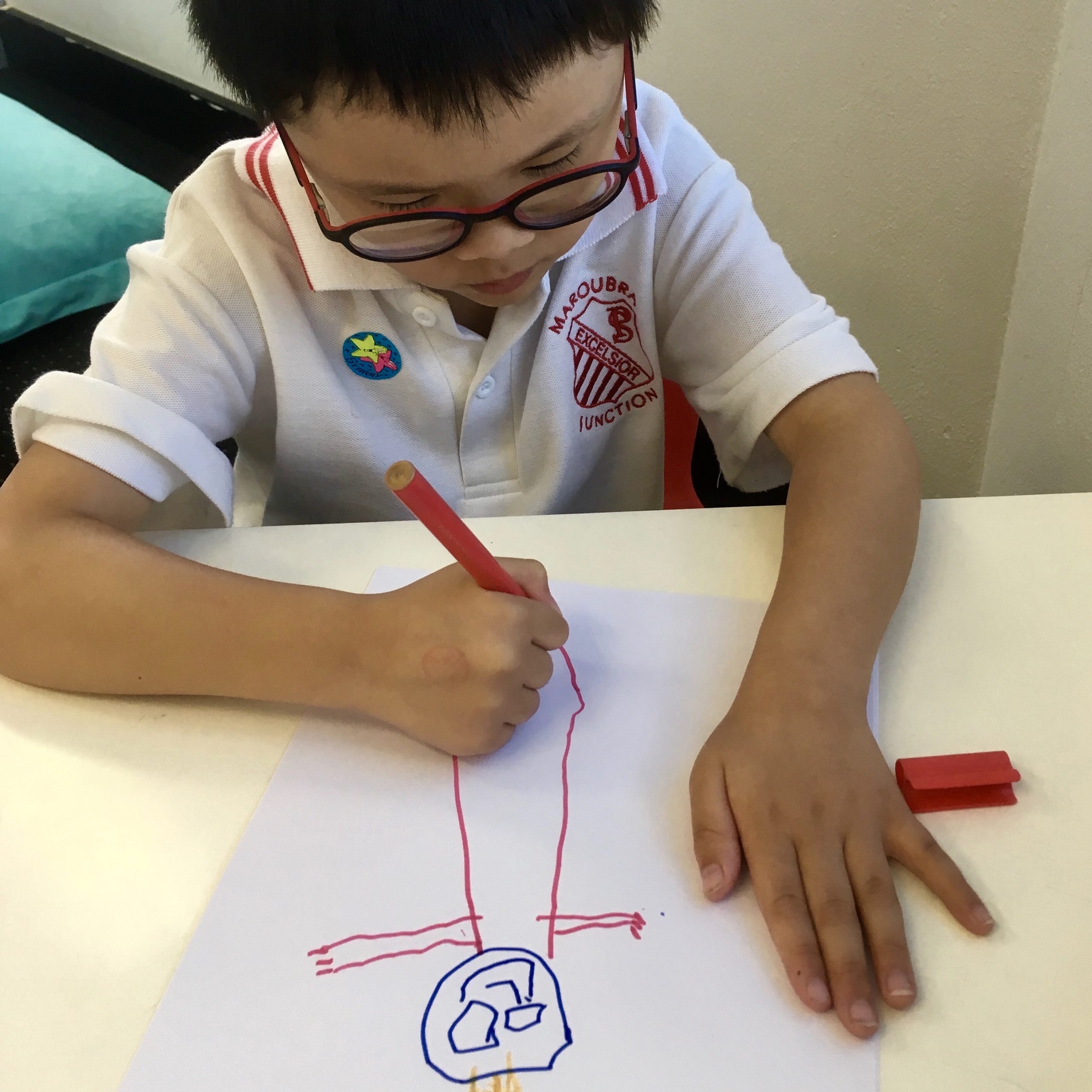
The Power of the Pincer Grip: Setting the Foundation for Successful Handwriting in our Bondi Junction and Mascot clinics
As a parent, you’re always looking for ways to support your child’s development. One of the most fundamental skills that significantly impact a child’s handwriting is the pencil grip (also known as the pincer grip). This seemingly small skill involves using the thumb and index finger to pick up and hold small objects. It’s not just crucial for developing good handwriting but also for various other fine motor tasks. Let’s dive into why the pincer grip is so important and how our Occupational Therapists in Bondi Junction and Mascot help children become successful writers.
What Is the Pincer Grip?
Imagine trying to pick up a tiny piece of cereal or a small bead. You naturally use your thumb and index finger to grab it, right? That’s the pincer grip in action! It’s one of the first fine motor skills that children develop, usually between 9 to 12 months old. As kids grow, refining this grip becomes essential for more complex tasks, like handwriting.
Building Strong Muscles
The pincer grip helps strengthen the small muscles in the hands and fingers. These muscles are crucial for controlling a pencil or pen. When children use their pincer grip to pick up objects, they are essentially doing finger exercises. These exercises make these muscles stronger and more coordinated. Strong hand muscles mean better control over writing instruments, leading to neater handwriting.
Coordination and Control
Good handwriting requires precise movements and control. The pincer grip helps children develop the coordination needed to move a pencil smoothly across the paper. Without this control, writing can become a messy and frustrating task. Think of the pincer grip as the foundation for all those loops, lines, and curves that make up letters.
Enhancing Hand-Eye Coordination
Hand-eye coordination is another critical skill for handwriting, and the pincer grip plays a big role here too. When children practice picking up small objects or colouring within the lines, they improve their ability to coordinate what they see with how they move their hands. This skill is directly transferable to writing, where children need to align their hand movements with the lines and spaces on the paper.
Developing Fine Motor Skills
Fine motor skills involve the small movements of the hands, fingers, and wrists. The pincer grip is a key component of these skills. Activities that encourage the pincer grip, like stringing beads, picking up small items, or playing with blocks, help refine these movements. As children master these fine motor skills, they become better prepared for writing tasks, from forming letters to writing sentences.
Encouraging Proper Pencil Grip
A proper pencil grip is essential for comfortable and efficient writing. The pincer grip helps children learn how to hold a pencil correctly, using the thumb and index finger while the middle finger supports the pencil. This grip allows for better control and less fatigue, making writing a more pleasant experience. Children who struggle with the pincer grip may find it harder to develop a proper pencil grip, leading to difficulties with handwriting.
Practical Ways to Develop the Pincer Grip at Home
Parents and teachers can encourage the development of the pincer grip through fun and simple activities. Here are a few ideas:
Picking Up Small Objects
Encourage children to pick up small items like beads, buttons, or pieces of cereal. This simple activity strengthens the pincer grip.
Pinching Playdough
Playing with playdough is not only fun but also excellent for building hand strength. Children can pinch, roll, and shape the dough, all of which help develop the pincer grip.
Using Tweezers or Tongs
Give children tweezers or tongs to pick up small objects. This activity mimics the pincer grip and adds an extra challenge.
Stringing Beads
Threading beads onto a string requires precise hand movements and is a fantastic way to practice the pincer grip.
Peeling Stickers
Peeling and sticking stickers is a fun activity that enhances fine motor skills and pincer grip strength.
Fun and Games
Incorporating pincer grip activities into daily playtime makes learning fun. Games like picking up cotton balls with clothespins, stacking small blocks, or even playing with finger puppets can all help improve this important skill. The key is to keep it enjoyable so that children stay engaged and motivated.
Conclusion
The pincer grip is a foundational skill that sets the stage for successful handwriting. By building strong hand muscles, enhancing coordination, and developing fine motor skills, the pincer grip helps children gain the control and precision needed for neat and efficient writing. Through fun and engaging activities, parents and teachers can support children in mastering this essential grip, paving the way for their future writing success. So, grab some beads, playdough, or tweezers, and start strengthening those tiny fingers today!
How OneOnOne Children’s Therapy Can Help
If you’re concerned about your child’s handwriting, OneOnOne Children’s Therapy in Bondi Junction and Mascot offers specialised programs to support children in developing these critical skills. Our team of experienced Occupational Therapists provide personalised interventions to help your child achieve their full potential in writing. Our OT’s are AHPRA registered.
Contact Us Today
Located conveniently in Bondi Junction and Mascot, our clinics are dedicated to helping children overcome handwriting challenges. Call us at (02) 8065 7837 or email us to schedule an appointment. You can also book a free 30-minute phone call to discuss your child’s needs and learn more about our programs.
Help your child develop the confidence and skills they need for academic success. Contact us today and see how we can make a difference!
